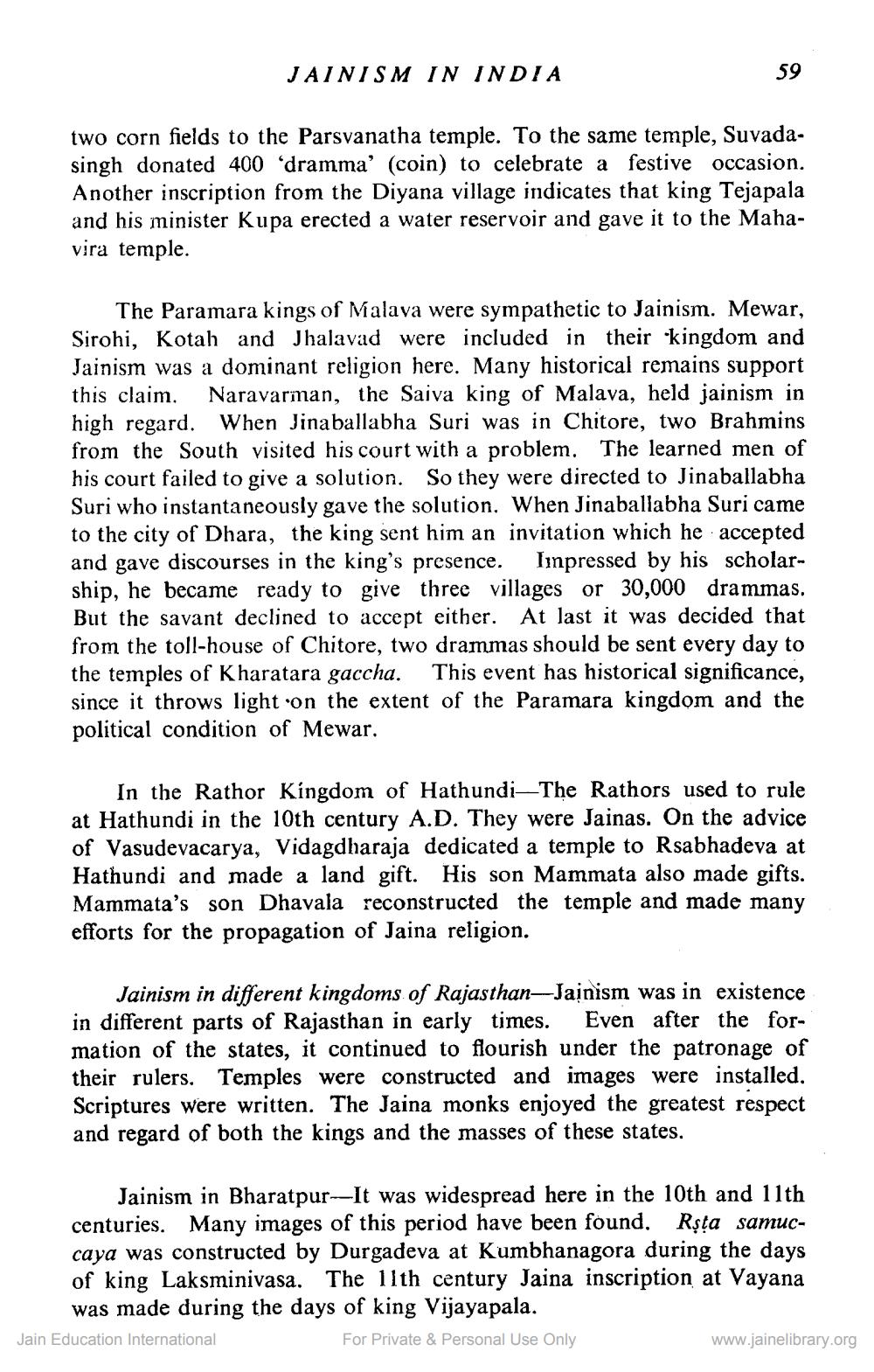________________
JAINISM IN INDIA
59
two corn fields to the Parsvanatha temple. To the same temple, Suvadasingh donated 400 dramma' (coin) to celebrate a festive occasion. Another inscription from the Diyana village indicates that king Tejapala and his minister Kupa erected a water reservoir and gave it to the Mahavira temple.
The Paramara kings of Malaya were sympathetic to Jainism. Mewar, Sirohi, Kotah and Jhalavad were included in their kingdom and Jainism was a dominant religion here. Many historical remains support this claim. Naravarman, the Saiva king of Malava, held jainism in high regard. When Jinaballabha Suri was in Chitore, two Brahmins from the South visited his court with a problem. The learned men of his court failed to give a solution. So they were directed to Jinaballabha Suri who instantaneously gave the solution. When Jinaballabha Suri came to the city of Dhara, the king sent him an invitation which he accepted and gave discourses in the king's presence. Impressed by his scholarship, he became ready to give three villages or 30,000 drammas. But the savant declined to accept either. At last it was decided that from the toll-house of Chitore, two drammas should be sent every day to the temples of Kharatara gaccha. This event has historical significance, since it throws light on the extent of the Paramara kingdom and the political condition of Mewar.
In the Rathor Kingdom of Hathundi—The Rathors used to rule at Hathundi in the 10th century A.D. They were Jainas. On the advice of Vasudevacarya, Vidagdharaja dedicated a temple to Rsabhadeva at Hathundi and made a land gift. His son Mammata also made gifts. Mammata's son Dhavala reconstructed the temple and made many efforts for the propagation of Jaina religion.
Jainism in different kingdoms of Rajasthan-Jainism was in existence in different parts of Rajasthan in early times. Even after the formation of the states, it continued to flourish under the patronage of their rulers. Temples were constructed and images were installed. Scriptures were written. The Jaina monks enjoyed the greatest respect and regard of both the kings and the masses of these states.
Jainism in Bharatpur--It was widespread here in the 10th and 11th centuries. Many images of this period have been found. Rșta samuccaya was constructed by Durgadeva at Kumbhanagora during the days of king Laksminivasa. The 11th century Jaina inscription at Vayana
was made during the days of king Vijayapala. Jain Education International For Private & Personal Use Only
www.jainelibrary.org




